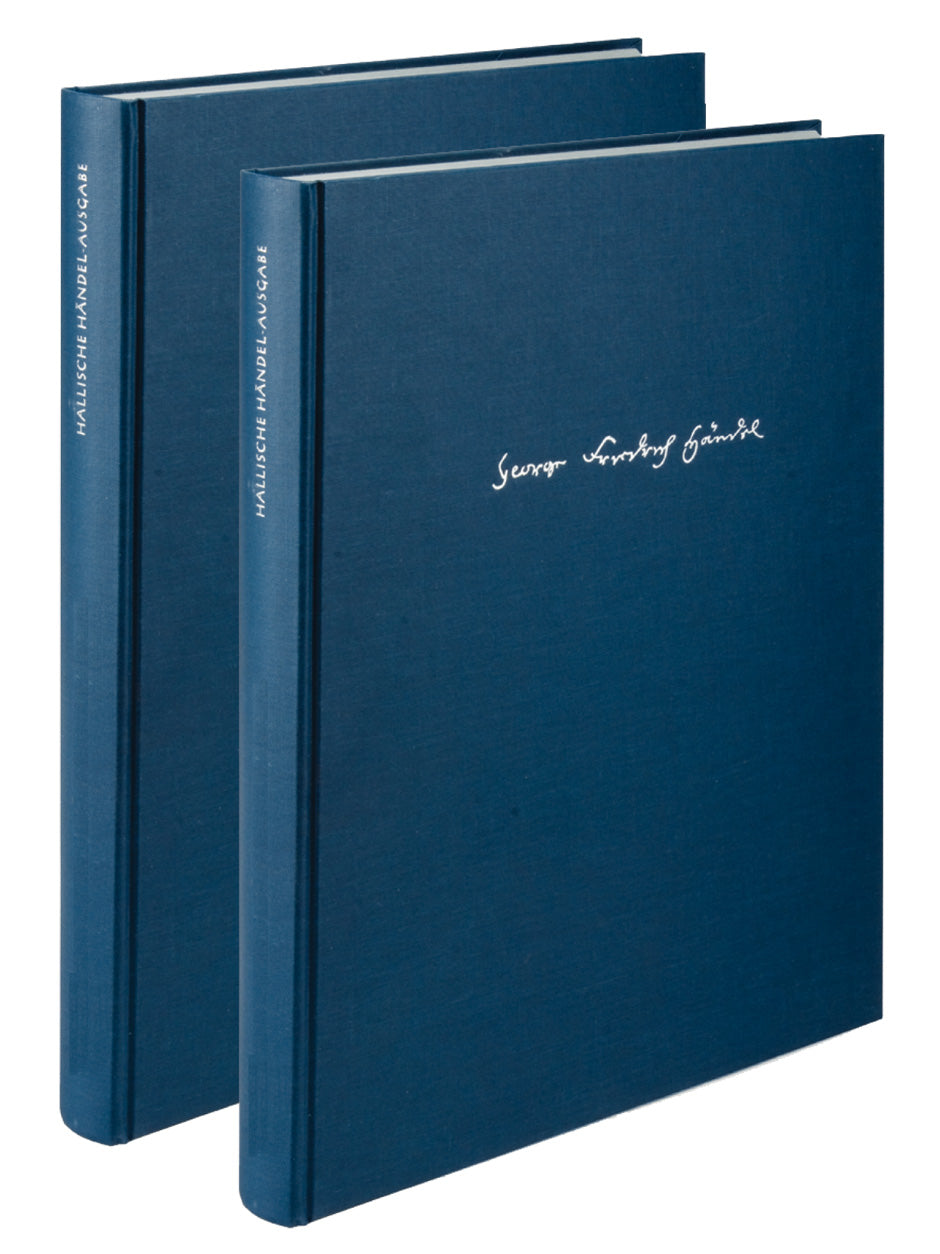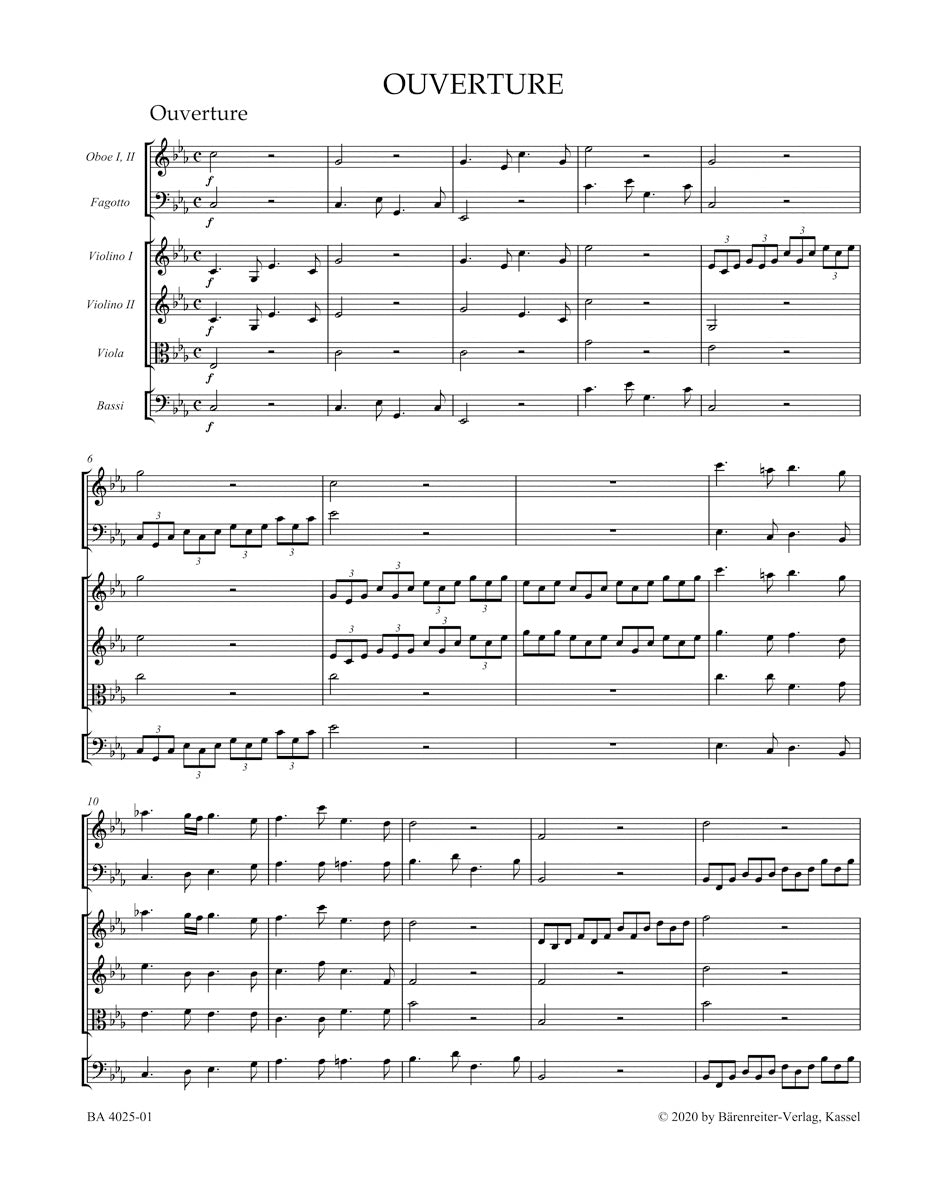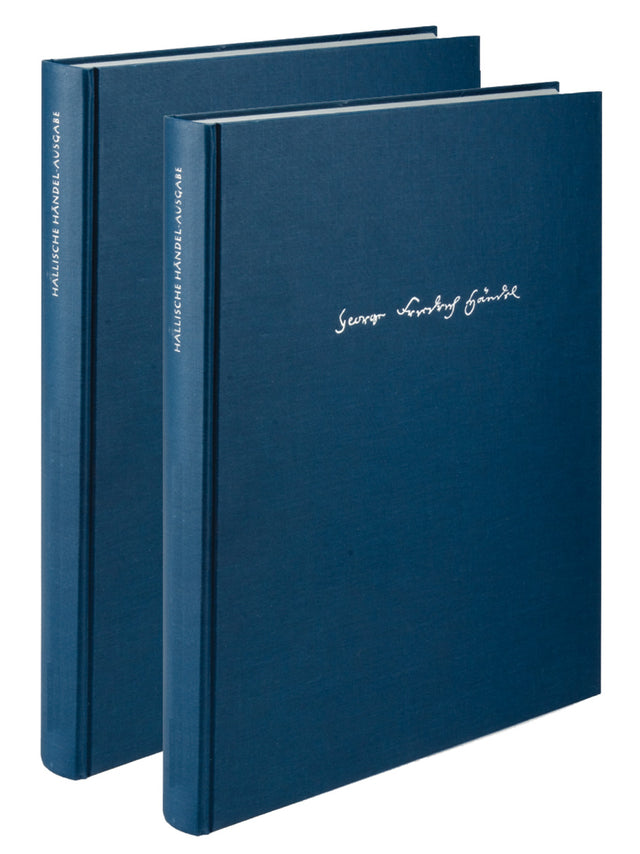Handel: Semele, HWV 58
Complete Edition: Series I/19 - Volumes 1 & 2
Expected to ship in about a week.
- Composer: George Frideric Handel (1685-1759)
- Editor: Mark Risinger
- Format: Full Score
- Instrumentation: Opera
- Work: Semele, HWV 58
- Binding: Hardcover
- ISMN:
- Size: 10.2 x 13.0 inches
- Pages: 464
- Urtext / Critical Edition
Description
Handel's "Semele", which premiered in February 1744, is based on an adapted version of William Congreve's opera libretto titled "The Story of Semele", originally published in 1706. However, neither Handel nor his librettist referred to "Semele" as an opera or an oratorio, which, according to the understanding at the time, would have required a biblical and/or Christian subject matter. Contemporary audiences also disagreed on the genre. The problematic classification as an oratorio has persisted into the present day, likely due to the edition labeled as such by Chrysander. The "Halle Handel Edition" (HHA) distances itself from this classification and, considering the available sources, refrains from assigning a genre label.
Congreve deviates from the mythological source multiple times in order to create tensions among the characters. The desired marriage between Semele and Athamas, whom she does not love, is an addition by Congreve to provoke the envy of her sister Ino, who desires Athamas herself. Therefore, Ino sees her own advantage in Semele's abduction by Jupiter. While Jupiter's wife Juno decides to destroy Semele out of jealousy for his relationship with her, Jupiter brings Ino to his palace to console Semele. The vengeful Juno takes advantage of Ino's presence and transforms into her likeness, persuading Semele to carry out a plan that later proves fatal. in the end, Ino emerges as the winner, as she is able to convince their father, Cadmus, to marry her to Athamas. The appearance of Apollo in the final scene to announce that Semele's immortal son Bacchus was saved from her ashes provides little consolation. However, this twist allows the drama to conclude with exuberant joy and a magnificent final chorus after the tragic scenes in the third act, culminating in the death of the protagonist.
Handel's autograph score shows significant deviations from and numerous revisions of the original version premiered. All surviving early versions, the musical movements deleted before the premiere, and the version of the December 1744, are given in the appendix to the HHA.
Publishers use a lot of words to describe what they sell, and we know it can be confusing. We've tried to be as clear as possible to make sure you get exactly what you are looking for. Below are descriptions of the terms that we use to describe the various formats that music often comes in.
Choral Score
A score for vocalists that only contains the vocal lines. The instrumental parts are not there for reference. Generally, cheaper than a vocal score and requires multiple copies for purchase.
Facsimile
Reproductions of the original hand-written scores from the composer.
Full Score
For ensemble music, this indicates that the edition contains all parts on a single system (there are not separate parts for each player). In larger ensembles, this is for the conductor.
Hardcover
Hardbound. Generally either linen-covered or half-leather.
Orchestral Parts
Similar to a wind set, this is a collection of parts. In the case of strings, the numbers listed are the number of copies included, though generally these are available individually (often with minimum quantities required).
Paperback
When publishers offer multiple bindings (e.g. hardcover) or study scores, this is the "standard" version. If you're planning to play the music, this is probably what you want.
Performance / Playing Score
A score of the music containing all parts on one system, intended for players to share. There are not separate parts for each player.
Set of Parts
For ensemble music, this indicates that there are separate individual parts for each player.
Solo Part with Piano Reduction
For solo pieces with orchestra, this is a version that contains a piano reduction of the orchestra parts. For piano pieces, two copies are typically needed for performance.
Study Score
A small (think choral size) copy of the complete score meant for studying, and not playing. They make great add-ons when learning concertos and small chamber works.
Vocal Score
A score prepared for vocalists that includes the piano/organ part or a reduction of the instrumental parts.
Wind Set
For orchestral music, this is a collection of wind and percussion parts. The specific quantities of each instrument are notated.
With Audio
In addition to the printed music, the edition contains recordings of the pieces. This may be an included CD, or access to files on the internet.
With / Without Fingering (Markings)
Some publishers prepare two copies - a pure Urtext edition that includes no fingering (or bowing) suggestions and a lightly edited version that includes a minimal number of editorial markings.




